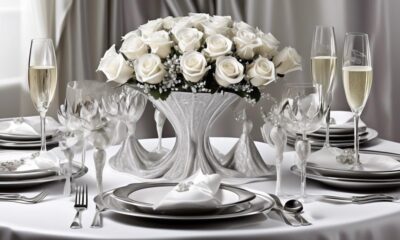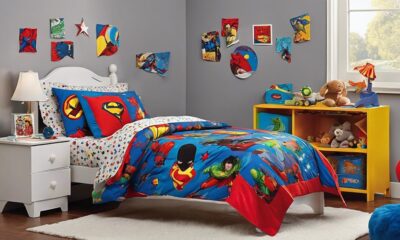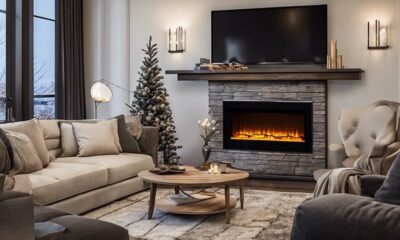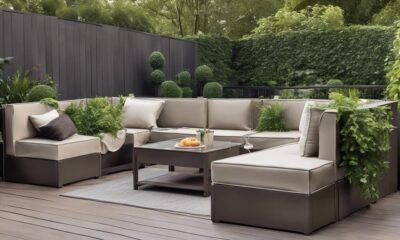Architecture Home Styles
Exploring the Difference Between Modern and Classic Home Decor
Kickstart your journey into the contrasting worlds of modern and classic home decor to discover the unexpected twists that shape your ideal living space.
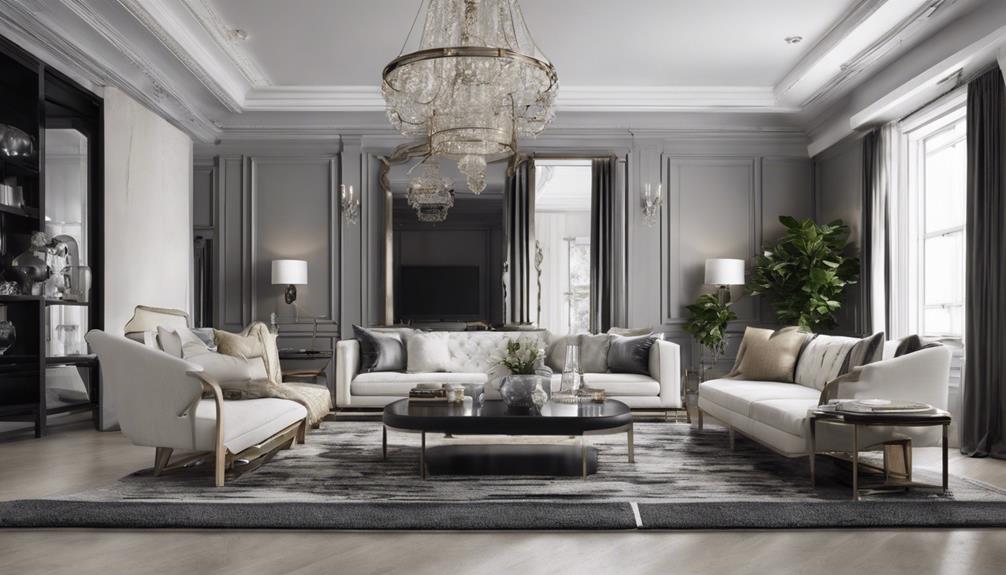
As we navigate the realm of home decor, the distinction between modern and classic styles stands as a fork in the design road, each path offering its own allure. One leads to the sleek, minimalist landscapes of modern design, while the other meanders through the intricate tapestries of classic elegance.
What sets these two apart in terms of ambiance and personal expression may surprise you. Let's unravel the layers of modern and classic home decor to uncover the secrets they hold for crafting your ideal living space.
Key Takeaways
- Modern home decor focuses on clean lines, minimalism, and technology integration.
- Classic home decor emphasizes ornate details, rich woods, and plush fabrics.
- Combining traditional warmth with modern simplicity creates a timeless and inviting space.
- Personalizing decor with unique elements like family mementos and customized color schemes enhances the home.
Characteristics of Modern Home Decor
Modern home decor, with its emphasis on clean lines, minimalistic furniture, and a focus on functionality, embodies a contemporary elegance that resonates with the desire for sleek, clutter-free living spaces. This design style deviates from the ornate and intricate detailing of Traditional interiors, opting instead for simplicity and sophistication.
In Modern design, furniture pieces are often sleek and geometric, contributing to a sense of openness and fluidity within a space. Neutral color palettes like whites, grays, and blacks dominate the Modern interior landscape, creating a canvas that allows for pops of color through decor and art. The integration of technology is a hallmark of Modern decor, with smart home features seamlessly blending into the overall design.
Sustainability is another key aspect, with eco-friendly materials and energy-efficient solutions being prioritized. Modern design celebrates open spaces, natural light, and a harmonious balance between form and function, making it a popular choice for those seeking a contemporary aesthetic.
Elements of Classic Home Decor
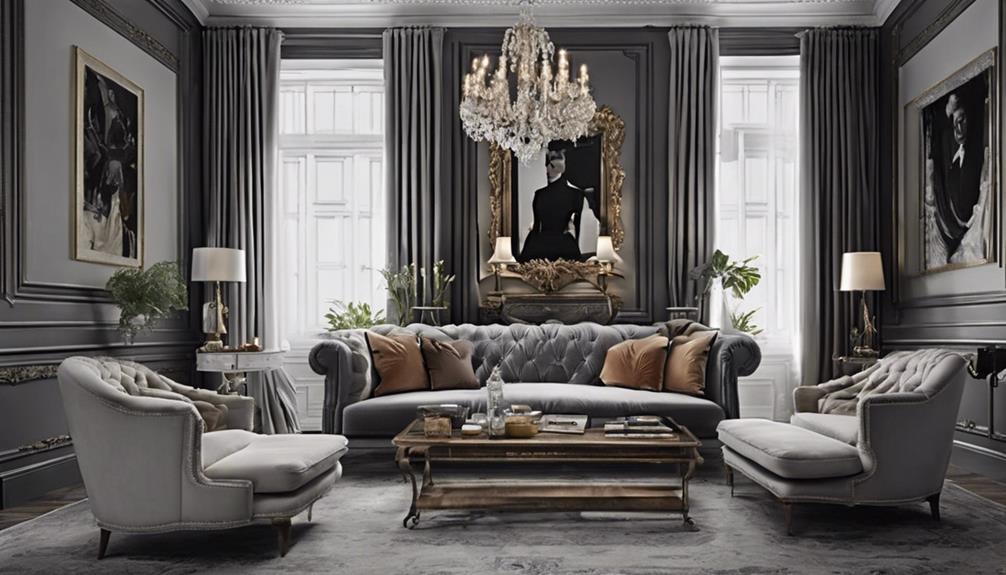
Embracing the essence of time-honored elegance and opulence, classic home decor showcases a distinct charm through its elaborate moldings, rich woods, and plush fabrics. Symmetrical patterns are meticulously incorporated to create a sense of order and attention to detail, enhancing the overall grandeur of the space. Heavy furniture pieces, often ornate and intricate, take center stage, prioritizing form over function in classic home decor. The warm color palette frequently used in this style cultivates a cozy and inviting atmosphere, enveloping visitors in a sense of comfort and nostalgia.
| Elements of Classic Home Decor | Description |
|---|---|
| Elaborate Moldings | Intricate and ornate trimmings that adorn walls and ceilings. |
| Rich Woods | Luxurious wooden furniture and fixtures adding warmth and elegance. |
| Plush Fabrics | Soft and lavish materials like velvet and silk for upholstery and drapery. |
| Symmetrical Patterns | Balanced designs that reflect a meticulous attention to detail and order. |
Design Influences on Home Decor
Transitioning from the intricate details of classic home decor, design influences on home decor encompass a broad spectrum of styles and trends that shape the way we create and personalize our living spaces. From minimalist modernism to eclectic bohemian vibes, these styles often draw inspiration from past eras while adapting to contemporary tastes. For instance, you can incorporate 60s decor into your space by integrating bold patterns, retro furniture, and pops of vibrant color that evoke the playful energy of that decade. Blending such nostalgic elements with modern accents creates a timeless yet dynamic environment that reflects your unique personality.
Modern design, with its minimalist principles and emphasis on clean lines, influences contemporary styles by promoting simplicity and functionality. In contrast, traditional design draws inspiration from historical elements, showcasing ornate patterns and traditional finishes that evoke a sense of timeless elegance.
Interior design today often combines aspects of modern and classic decor to create unique spaces that reflect individual tastes. Modern furniture pieces are favored for their sleek designs and ability to complement various color schemes, while classic elements like rich colors and luxurious textures add depth and sophistication to a room.
Furthermore, the trend towards open spaces in modern design has influenced how we arrange furniture and envision our living areas, emphasizing a sense of flow and connectivity within the home. These design influences continually shape the way we perceive and interact with our living environments, offering a blend of tradition and innovation for a truly personalized aesthetic.
Incorporating Modern and Classic Styles

Incorporating a harmonious blend of modern and classic styles in home decor elevates the aesthetic appeal and creates a timeless charm that resonates with personal tastes and preferences. When merging traditional design elements with modern design concepts, one can achieve a truly unique and captivating interior.
Here are three key ways to seamlessly integrate traditional and modern styles:
- Blend Traditional Colors with Contemporary Interior: Combining classic color palettes and patterns with sleek, modern furniture can create a striking visual contrast that adds depth and character to the space.
- Integrate Vintage Pieces with Contemporary Furnishings: Mixing vintage or antique decor items with contemporary pieces brings a sense of history and character to a room, enhancing its overall appeal.
- Achieve a Balance Between Traditional and Modern Touch: Striking a balance between the warmth of traditional decor and the clean lines of modern design ensures a versatile and inviting atmosphere that's both stylish and functional.
Creating a Personalized Home Decor Style
Our home decor style becomes a reflection of our unique personality and preferences, shaping a space that is distinctly ours. Incorporating personal mementos, customizing color schemes, furniture arrangements, and mixing traditional with modern elements all play a crucial role in creating a personalized living space that speaks to who we are. By adding personal mementos, such as family photos or heirlooms, we infuse our decor with sentimental value and memories. Choosing the right color schemes and furniture arrangements allows us to express our style and create a harmonious atmosphere. Accessories like artwork or decorative pieces add a unique touch to the space. The table below showcases how mixing elements and expressing personality through decor choices can transform a house into a personalized and inviting home.
| Elements | Description | Emotion |
|---|---|---|
| Personal Mementos | Family photos, heirlooms | Sentimental |
| Color Schemes | Customized palettes | Vibrant |
| Furniture Arrangements | Unique layouts | Cozy |
| Accessories | Artwork, decorative pieces | Stylish |
| Mixing Elements | Traditional with modern | Eclectic |
Frequently Asked Questions
What Is the Difference Between Modern and Classic Home Decor?
When comparing modern and classic home decor, one can discern a stark contrast in design principles, color schemes, and overall ambiance.
Modern decor boasts clean lines, minimalism, and neutral hues for a sleek and uncluttered feel.
In contrast, classic decor showcases ornate details, rich colors, and traditional patterns, emanating warmth and elegance.
The distinction lies in the fusion of simplicity and functionality versus traditional elements and opulence.
How Do You Mix Modern and Classic Decor?
When mixing modern and classic decor, we emphasize blending traditional elements like ornate details and warm colors with modern aesthetics like clean lines and neutral tones.
This fusion creates a harmonious balance between old-world charm and sleek modernism, incorporating classic patterns and textiles to add depth.
A cohesive color scheme ties everything together, while statement pieces merging traditional craftsmanship with modern design serve as stunning focal points.
What Is the Difference Between Modern Design and Classic Design?
When we compare modern design to classic design, the distinction lies in their essence. Modern design embraces simplicity, clean lines, and minimalism, deriving inspiration from the early to mid-20th century.
In contrast, classic design showcases ornate details, rich colors, and traditional patterns, drawing from the opulence of Western European 18th-19th-century décor. The former prioritizes functionality and neutral hues, while the latter exudes historical richness and warmth.
What Is the Difference Between Contemporary and Traditional Decor?
Well, folks, when it comes to contemporary versus traditional decor, we've got two different worlds colliding!
Traditional decor is all about the ornate details, rich colors, and luxurious fabrics, giving off that classic and timeless vibe.
On the flip side, contemporary decor is all about simplicity, clean lines, and minimalism, showcasing the latest trends and innovative materials.
Conclusion
As we navigate the world of home decor, we're reminded that 'simplicity is the ultimate sophistication.'
Embracing the differences between modern and classic styles allows us to create a personalized space that reflects our unique tastes and preferences.
Whether we choose clean lines and muted colors or rich details and traditional patterns, our homes become a reflection of our personalities and a sanctuary where comfort meets style.
In the end, it's all about finding the perfect balance that brings us joy and serenity.
- About the Author
- Latest Posts
Introducing Ron, the home decor aficionado at ByRetreat, whose passion for creating beautiful and inviting spaces is at the heart of his work. With his deep knowledge of home decor and his innate sense of style, Ron brings a wealth of expertise and a keen eye for detail to the ByRetreat team.
Ron’s love for home decor goes beyond aesthetics; he understands that our surroundings play a significant role in our overall well-being and productivity. With this in mind, Ron is dedicated to transforming remote workspaces into havens of comfort, functionality, and beauty.
Architecture Home Styles
Why Are German Houses So Sturdy? Uncovering the Secrets
Intrigued to discover how German houses achieve unparalleled durability through innovative techniques and sustainable practices?
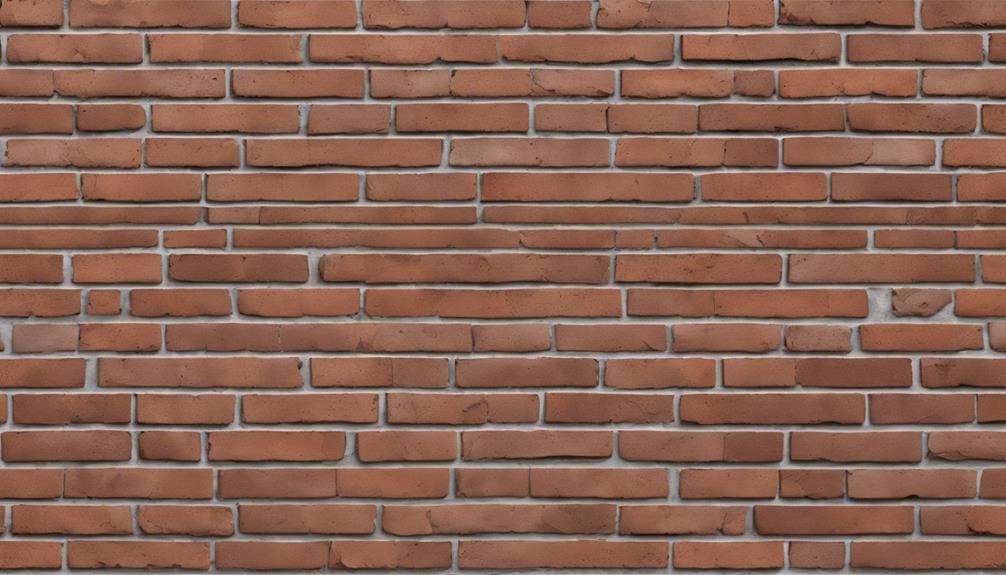
When examining the durability of German homes, it is clear that there is a fascinating range of techniques and materials involved in their construction. From the careful selection of building materials to the innovative structural design principles used, German houses showcase meticulous craftsmanship and engineering expertise.
But what truly sets them apart and makes them so resilient against the test of time and elements? The answer may lie in a combination of traditional building techniques, quality materials, and a deep-rooted commitment to sustainability that permeates every aspect of German housing construction.
Key Takeaways
- German houses prioritize high-quality materials and craftsmanship for durability.
- Energy-efficient design and superior insulation contribute to sustainability.
- Robust construction practices and advanced engineering ensure long-term reliability.
- Weather-resistant features like concrete block-work walls enhance structural integrity.
Traditional Building Techniques in Germany
Traditional German houses stand as testaments to the meticulous craftsmanship and robust construction techniques that have withstood the test of time, showcasing a blend of concrete, rebar, sand, and limestone for unparalleled durability. The use of concrete in traditional German homes not only provides exceptional strength but also enhances energy efficiency. The thick concrete walls act as excellent thermal mass, storing heat during the day and releasing it slowly at night, reducing the need for additional heating or cooling systems. This energy-efficient design is a key feature of German houses, contributing to their sustainability and cost-effectiveness in the long run.
Moreover, the incorporation of rebar within the concrete walls ensures structural integrity, making the houses resilient against external forces such as strong winds or seismic activity. The careful selection of high-quality materials like sand and limestone further enhances the durability of these buildings, resulting in structures that can withstand the test of time while promoting sustainability through energy-efficient design.
Importance of Quality Materials

Utilizing high-quality materials is paramount in ensuring the structural integrity and longevity of German houses. German homes stand out for their robustness, a quality achieved through the meticulous selection of construction materials. Concrete, reinforced with rebar, sand, and limestone, forms the foundation of these structures, providing exceptional durability and strength. Moreover, the emphasis on superior insulation, primarily attributed to the concrete walls, plays a pivotal role in enhancing energy efficiency within German homes.
The choice of construction material in German house building not only guarantees sturdiness but also reflects a commitment to longevity and structural integrity. By incorporating these quality materials, German houses not only withstand the test of time but also offer superior comfort and energy efficiency to residents. The meticulous attention to detail in material selection showcases a dedication to innovation and excellence in construction practices, setting a high standard for durability and sustainability in housing design.
Structural Design Principles in German Homes
When designing German homes, we prioritize robust building materials to ensure structural integrity and longevity.
Efficient floor plans are meticulously crafted to maximize space utilization and enhance functionality.
Quality craftsmanship is paramount in German house construction to guarantee durability and reliability.
Robust Building Materials
In the structural design of German homes, the incorporation of robust building materials like concrete, rebar, sand, and limestone is pivotal to ensuring durability and resilience against various environmental challenges. These materials form a strong foundation for a well-insulated home that can withstand the test of time.
The combination of concrete and rebar provides structural integrity, while sand and limestone enhance the insulation properties of the walls, ensuring energy efficiency. German houses are designed to withstand harsh weather conditions and remain durable even in cold temperatures.
By prioritizing the use of these robust building materials, German homes achieve a high level of strength and longevity, making them a prime example of innovative and sustainable construction practices.
- Concrete and rebar for structural integrity
- Sand and limestone for enhanced insulation
- Durability in harsh weather conditions
Efficient Floor Plans
The efficiency of German floor plans is exemplified through their meticulous design, which prioritizes distinct spaces for various functions, emphasizing compartmentalization for a well-structured living environment. German homes are renowned for their efficient use of space, with layouts that carefully delineate areas for specific activities.
This compartmentalized approach not only enhances organization and order within the house but also contributes to its overall sturdiness. By creating clear divisions between rooms, German houses cater to the need for privacy and functional living. The structured interior layouts reflect a deep-seated preference for well-defined spaces, promoting a sense of solidity and durability in the construction.
These design principles are integral to the German architectural tradition, ensuring that homes aren't only aesthetically pleasing but also highly functional and robust.
Quality Craftsmanship
What structural design principles underpin the quality craftsmanship found in German homes? German builders use a mixture of innovative techniques to ensure the durability and robustness of residential structures. Here are three key elements contributing to the quality craftsmanship in German homes:
- Precision Engineering: German builders employ precise engineering methods to create homes that are structurally sound and stable.
- Advanced Materials: Builders in Germany utilize high-quality materials that enhance the strength and longevity of the homes.
- Attention to Detail: Skilled artisans pay meticulous attention to every aspect of construction, ensuring that each component is flawlessly integrated for optimal structural integrity.
Role of Insulation in Sturdiness
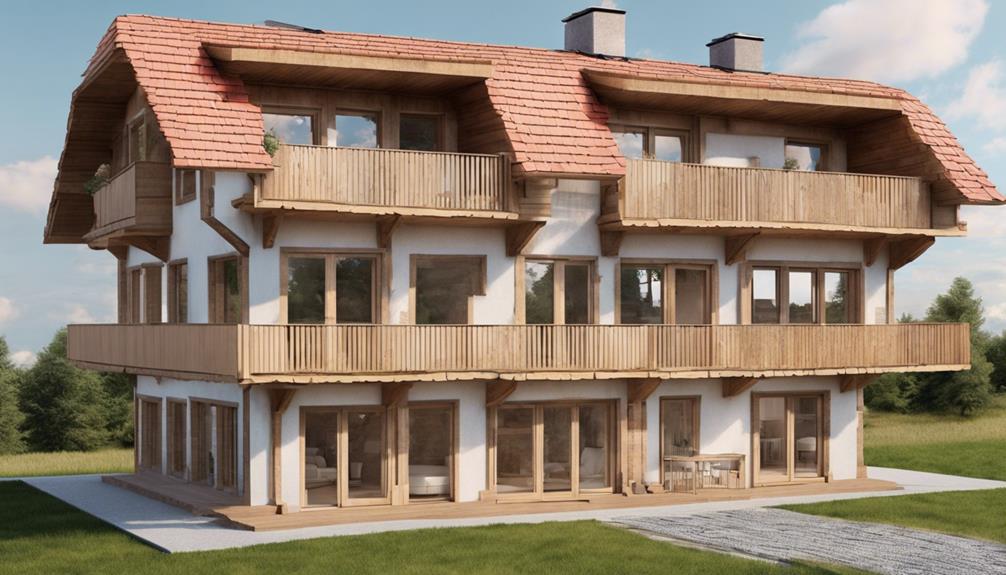
Insulation material types determine the efficacy of thermal regulation within German houses, impacting their energy efficiency significantly.
The influence of weather conditions on the insulation's performance is crucial in maintaining the sturdiness of these structures.
Understanding how these factors interact is key to comprehending the role insulation plays in the overall durability of German homes.
Insulation Material Types
Utilizing high-quality insulation materials such as mineral wool, foam boards, and cellulose is essential for enhancing the sturdiness of German houses. These materials are the cornerstone of construction material for modern homes in Germany due to their exceptional properties.
- Mineral wool: Known for its excellent thermal insulation capabilities, mineral wool effectively regulates indoor temperatures and prevents energy loss.
- Foam boards: These rigid boards provide structural support while insulating against heat, cold, and sound, contributing to the overall stability of the house.
- Cellulose: A sustainable option made from recycled paper, cellulose insulation offers fire resistance and moisture control, ensuring long-term durability for German homes.
Energy Efficiency Impact
In enhancing the sturdiness of German houses, the role of insulation in energy efficiency is paramount. Proper insulation not only keeps the indoor temperature stable but also significantly reduces energy consumption. This dual functionality contributes to the overall durability and longevity of German homes. Here is a breakdown of how insulation impacts energy efficiency in German houses:
| Energy Efficiency Impact of Insulation | Description |
|---|---|
| Reduced Heat Loss | High-quality insulation minimizes heat loss through walls and roofs, leading to energy savings. |
| Thermal Comfort | Insulation ensures consistent indoor temperatures, enhancing comfort levels for occupants. |
| Environmental Sustainability | Energy-efficient insulation reduces the carbon footprint of German houses, promoting sustainability. |
Weather Conditions Influence
To understand the influence of weather conditions on the sturdiness of German houses, we must recognize the pivotal role that insulation plays in maintaining structural integrity and comfort levels. Quality insulation in German homes ensures durability and robustness against external elements.
Here are three key points regarding the impact of insulation on the sturdiness of German houses:
- Insulation in German homes helps regulate temperature effectively, contributing to a stable and comfortable living environment.
- The emphasis on strong insulation in German houses allows them to withstand harsh weather conditions and cold temperatures.
- The insulation not only enhances energy efficiency but also plays a significant role in the overall sturdiness of the structures.
Weather Resistance Strategies
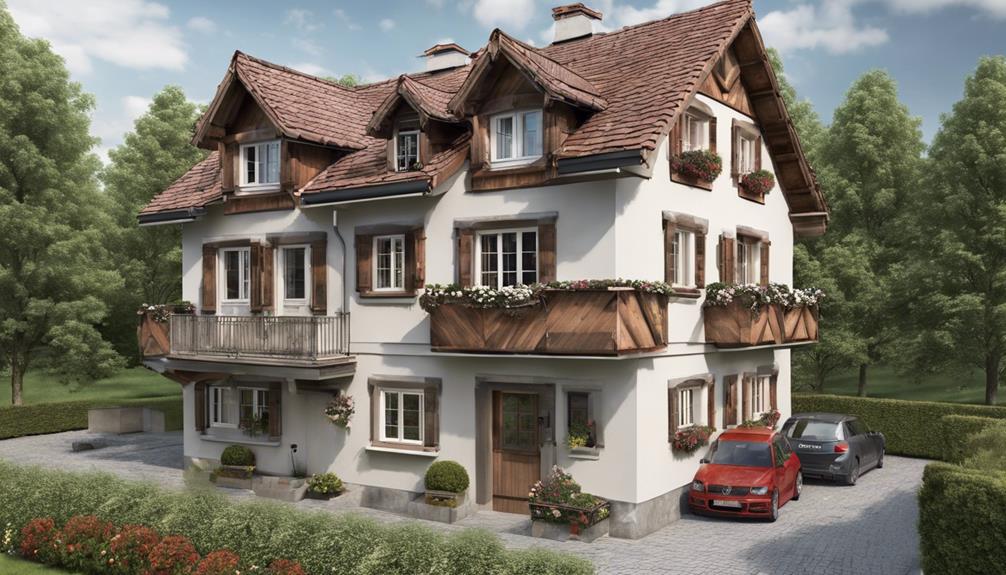
When constructing German houses, a focus on using durable materials and advanced insulation techniques ensures unparalleled weather resistance against harsh elements like wind, rain, and snow. Insulation, particularly in the form of concrete block-work for the walls, plays a vital role in the overall sturdiness and weather resistance of German homes. This insulation not only provides structural integrity but also serves as a barrier against extreme temperatures and weather conditions, ensuring a comfortable living environment year-round.
To delve deeper into the strategies employed for weather resistance in German houses, let's examine a table showcasing key features:
| Weather Resistance Strategies | Description | Benefits |
|---|---|---|
| Concrete Block-work Walls | Utilizes dense concrete blocks for walls | Offers robust insulation, durability, and protection against harsh weather. |
| Advanced Roofing Materials | Incorporates weather-resistant roofing materials | Enhances protection from rain, snow, and wind, increasing the longevity of the structure. |
| High-Quality Windows | Installs windows designed for weather resistance | Prevents heat loss and air leakage, maintaining energy efficiency and interior comfort. |
The Impact of German Engineering

German engineering's impact on the construction of homes is evident in the unparalleled durability and longevity of German houses. The meticulous attention to detail and robust construction techniques employed in German engineering play a pivotal role in shaping the sturdy nature of German houses. Here are some key aspects highlighting the impact of German engineering on housing construction:
- Integration of advanced materials: German houses benefit from the use of high-quality materials like concrete and strong insulation, enhancing their structural integrity and resilience against external elements.
- Emphasis on precision and craftsmanship: German engineering prioritizes precise design and construction methods, ensuring that each component of the house is meticulously crafted to withstand wear and tear effectively.
- Focus on long-term performance: By prioritizing durability and longevity in the design process, German engineering principles result in houses that aren't only sturdy but also reliable over extended periods.
This emphasis on sturdy construction techniques underscores the reputation of German houses for their strength and stability, making them a benchmark in the field of residential construction.
Durability of German Roofing Systems
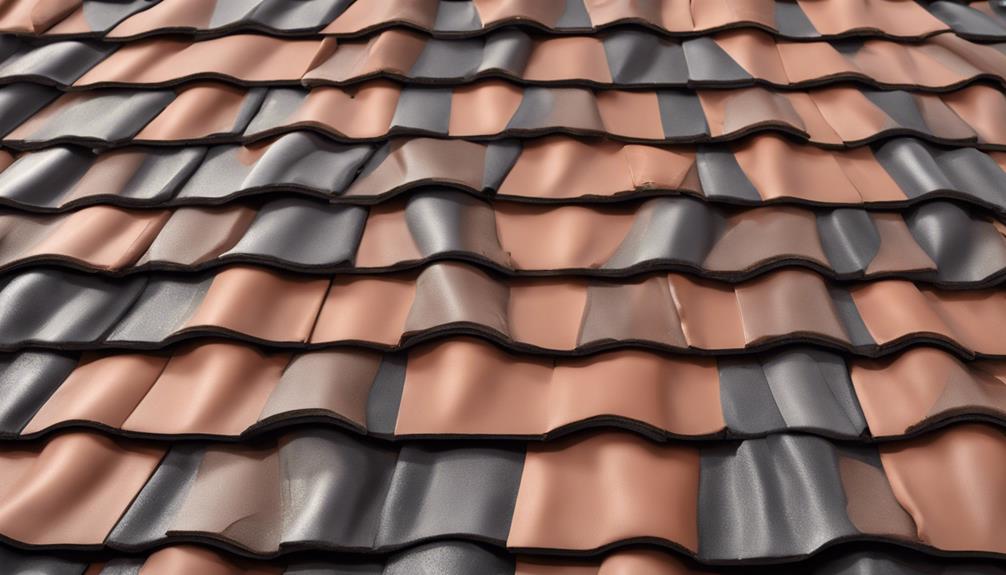
Using state-of-the-art asphalt roof tiles, German roofing systems ensure unparalleled durability and weather resistance. Asphalt roof tiles are a popular choice due to their exceptional longevity and ability to withstand harsh environmental conditions. When properly installed, these tiles significantly contribute to the overall sturdiness and longevity of German houses.
The meticulous design of German roofing systems provides excellent protection against rain, snow, and extreme temperatures, ensuring the interior remains safe and secure. By incorporating high-quality materials, German roofs guarantee long-term durability and structural integrity, making them a reliable choice for homeowners seeking resilient construction solutions.
The use of asphalt roof tiles in German construction showcases a commitment to quality and innovation, emphasizing the importance of selecting materials that can withstand the test of time and nature. This meticulous approach to roofing highlights one of the many facets contributing to the renowned durability of German homes.
Foundation Strength in German Construction
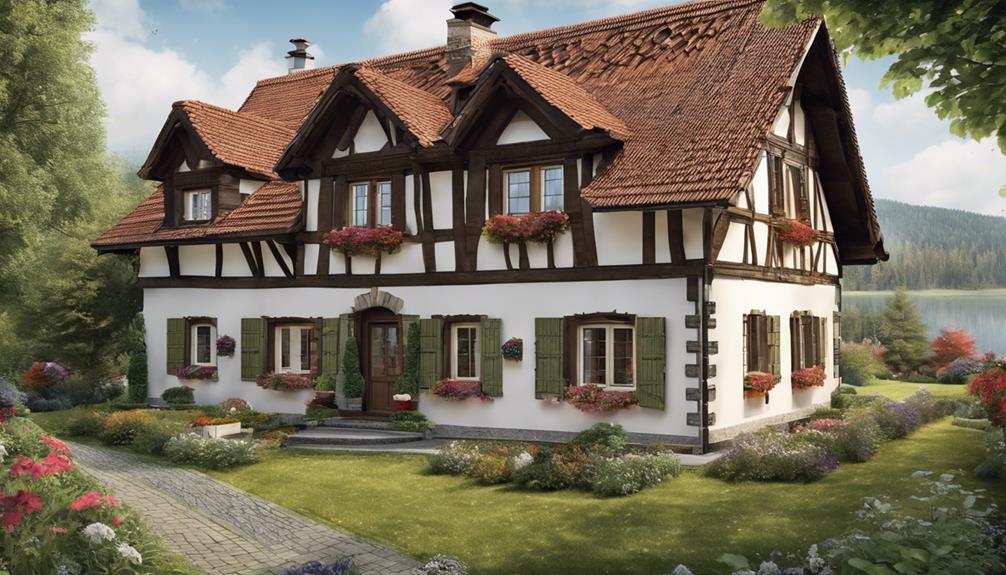
In ensuring the structural integrity and longevity of German buildings, the foundation strength in German construction plays a pivotal role. German houses boast sturdy foundations primarily constructed using concrete, a material known for its robustness and durability.
Reinforced concrete, a specific type of concrete with embedded materials like steel rods or mesh, is commonly employed in German construction for foundation work. This reinforcement technique enhances the foundation's ability to bear heavy loads and resist cracking, settling, or shifting over time.
The stringent German building codes mandate the use of high-quality materials such as reinforced concrete to ensure the foundations can endure a range of environmental conditions. By incorporating these advanced construction practices, German houses are equipped to withstand seismic activity effectively, safeguarding the structures and ensuring their long-term stability and safety.
- German houses utilize sturdy foundations constructed with concrete.
- Reinforced concrete is a common material used in German foundation construction.
- Stringent building codes in Germany require high-quality materials for foundation strength.
Sustainability Practices in German Housing
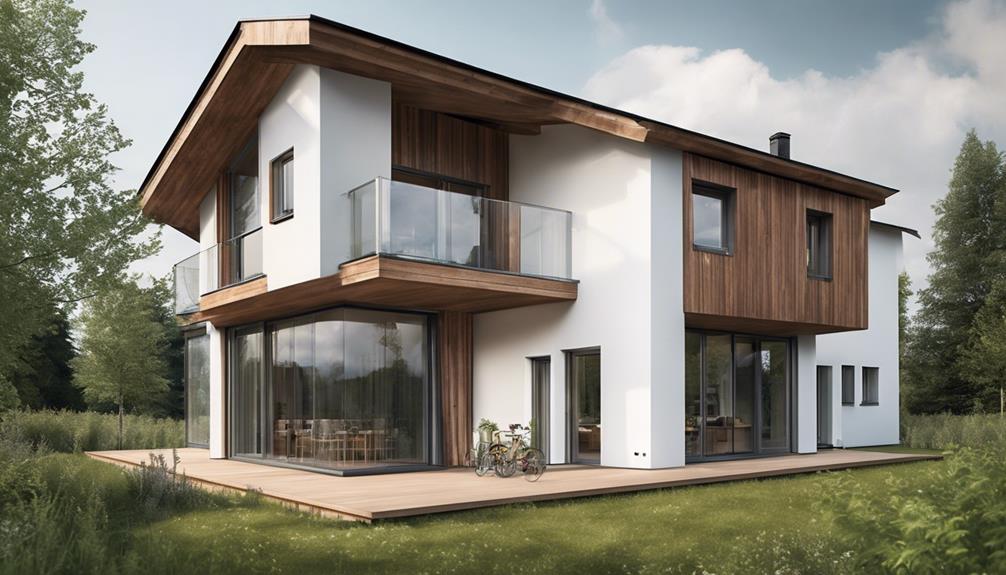
Pivoting from the discussion on foundation strength in German construction, our exploration now turns to the sustainability practices embedded within the realm of German housing.
German houses prioritize sustainability by employing energy-efficient construction techniques. Sustainable materials such as concrete, limestone, and insulated forms are commonly utilized in German housing to ensure durability and long-term energy efficiency, thus reducing the environmental impact.
Insulation plays a crucial role in maintaining energy efficiency, alongside efficient heating systems that contribute to the overall sustainability of German houses. Moreover, government support for sustainable building practices further encourages the adoption of eco-friendly materials in German housing projects.
Frequently Asked Questions
Why Are German Houses so Sturdy?
We believe German houses are so sturdy due to the use of durable materials like concrete, rebar, and limestone in construction. The emphasis on strength and durability in their design, along with robust construction methods such as insulated concrete forms, contributes to their resilience.
Additionally, insulation plays a crucial role in maintaining sturdiness and energy efficiency. This reflects a cultural focus on quality and long-lasting structures.
Why Do German Houses Look Like That?
We believe German houses look robust due to the meticulous use of concrete, rebar, sand, and limestone in construction. This attention to detail ensures durability and longevity, with designs tailored to withstand harsh weather conditions.
The combination of strong materials and construction techniques imparts a sense of security and stability. This commitment to quality and resilience contributes to the sturdy appearance of German houses, making them stand out in their reliability and endurance.
Why Do German Houses Have Two Front Doors?
When exploring the architectural intricacies of German houses, the presence of two front doors stands out. This unique feature serves as a testament to the historical and cultural values of privacy, individuality, and autonomy within a shared living space.
The design of dual entrances accommodated the needs of multiple families or tenants, offering distinct access points and delineating property boundaries. Such deliberate architectural choices underscore the traditional emphasis on independence and functional separation in German housing design.
What Is the Difference Between American and German Houses?
When comparing American and German houses, we notice a stark contrast in construction methods and materials. American homes often lean towards wooden structures, while German houses prioritize concrete, rebar, and limestone for robustness and insulation. This distinction reflects broader architectural preferences and cultural factors, with American homes favoring speed and flexibility in construction and Germans emphasizing durability and energy efficiency. Additionally, the differences between traditional and modern homes in both countries further highlight the evolution of design priorities, such as sustainability and technological integration. These contrasts not only reveal varying approaches to housing but also underscore the influence of climate, resources, and societal values on architectural choices.
Energy efficiency shines in German homes with features like double or triple-paned windows and under-floor heating. The focus on longevity and quality in German construction sets a high standard that stands out from American norms.
Conclusion
In conclusion, German houses stand like fortresses against the elements, built with the precision of a watchmaker and the strength of a mountain. Their sturdy walls, efficient insulation, and durable materials combine to create homes that weather storms and stand the test of time.
Like a well-oiled machine, German engineering ensures that these houses aren't just structures, but symbols of resilience and quality craftsmanship.
- About the Author
- Latest Posts
Introducing Ron, the home decor aficionado at ByRetreat, whose passion for creating beautiful and inviting spaces is at the heart of his work. With his deep knowledge of home decor and his innate sense of style, Ron brings a wealth of expertise and a keen eye for detail to the ByRetreat team.
Ron’s love for home decor goes beyond aesthetics; he understands that our surroundings play a significant role in our overall well-being and productivity. With this in mind, Ron is dedicated to transforming remote workspaces into havens of comfort, functionality, and beauty.
Architecture Home Styles
5 Reasons Why Modular Homes Lose Value Faster
Journey through the reasons why modular homes depreciate faster than traditional ones, uncovering surprising insights that might change your view on these dwellings.

Navigating the world of modular homes can feel like maneuvering through a complex maze with potential hidden obstacles.
You might be wondering why these homes lose value faster than traditional ones. Well, imagine a scenario where customization options are limited, leading to a lack of unique features that could boost resale value. This lack of personalization often makes it challenging for potential buyers to see the home as a good long-term investment, further driving down its appeal. Additionally, the differences between tiny and micro homes can play a role, as buyers may have specific preferences when it comes to size, layout, or functionality that one type of home satisfies better than the other. These factors combined create a market where resale potential is less stable compared to more conventional homes.
But that's just the tip of the iceberg.
Stay with us to uncover four more critical reasons that could impact the worth of modular homes and shift your perspective on this housing option.
Key Takeaways
- Limited customization options lead to faster depreciation rates.
- Quality assurance issues can contribute to quicker value depreciation.
- Market perception influences resale rates and depreciation speed.
- Economic conditions and location play vital roles in modular homes' resale value.
Limited Customization Options
Limited customization options in modular homes result from the predetermined floor plans provided by builders. Unlike traditional stick-built homes where almost any design can be accommodated, modular homes have set floor plans that limit the extent of customization possible. Buyers may find it challenging to achieve specific preferences for each modular piece, restricting their ability to create a truly unique living space.
Custom features such as all-glass rotundas or log-cabin styles are more difficult to incorporate into modular homes due to these constraints. For individuals with particular home building desires that go beyond what the standard floor plans offer, modular homes may not be the ideal choice.
The limited customization options in modular homes can deter those seeking extensive personalization in their home design, making it crucial for buyers to carefully consider their preferences and the flexibility of modular construction before committing to this type of housing.
Rapid Depreciation Rates
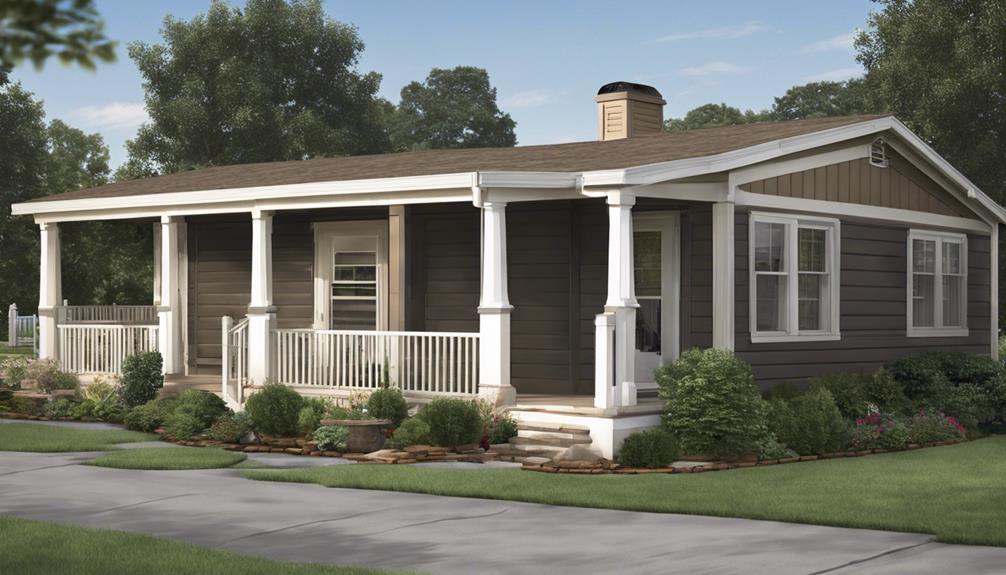
Considering the various factors that contribute to the depreciation of modular homes, rapid depreciation rates can be influenced by a combination of limited customization options, technological advancements, market fluctuations, maintenance practices, and investment decisions.
When it comes to rapid depreciation rates in modular homes, there are key aspects to consider:
- Limited Customization Options: The restricted ability to personalize modular homes can lead to a faster loss of value compared to traditional homes, as buyers may seek more tailored options elsewhere.
- Technological Advancements: Rapid changes in technology and design trends can quickly render older modular homes outdated, impacting their market value negatively.
- Market Fluctuations: Modular homes are susceptible to market fluctuations and changing buyer preferences, which can result in accelerated depreciation rates when demand shifts towards more modern or customizable housing options.
These factors collectively contribute to the quicker depreciation of modular homes, highlighting the importance of staying attuned to market trends and investing wisely in customization options to preserve property value.
Potential Quality Concerns
Upon inspection, potential quality concerns in modular homes often stem from errors in construction due to insufficient supervision throughout the building process. These issues can manifest in various ways, such as misaligned modules, subpar finishing, or structural weaknesses.
To combat these challenges, opting for higher quality modular home options is crucial. Choosing reputable builders who prioritize attention to detail and use superior materials can significantly reduce the likelihood of encountering quality problems.
Higher quality modular homes not only offer better durability and longevity but also tend to retain their value more effectively over time. Moreover, investing in quality construction upfront can help prevent costly repairs and maintenance down the line, ultimately safeguarding the overall investment in the modular home.
Market Perception Challenges
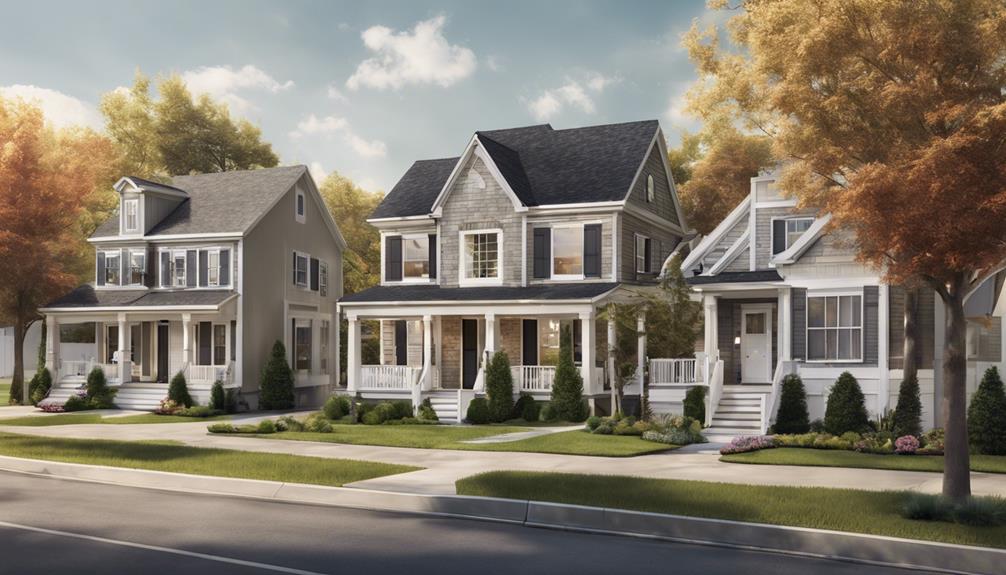
Market perception challenges can significantly influence the resale value of modular homes. When it comes to real estate, the way potential buyers perceive modular homes can have a direct impact on their market value. Here are three key points to consider:
- Misconceptions about Quality: Some buyers may hold misconceptions about the quality and durability of modular homes compared to stick-built homes. These misconceptions can lead to lower perceived value and impact resale rates.
- Slower Resale Rates: Public perception of modular homes may result in slower resale rates when compared to traditional stick-built homes. This can be due to concerns about longevity, customization options, or overall aesthetics.
- Educational Efforts: Overcoming negative stereotypes about modular homes is crucial for maintaining resale value. Educating potential buyers on the benefits, features, and quality of modular homes can help improve market perception and potentially increase resale value over time.
Resale Value Fluctuations
Fluctuations in the resale value of modular homes can be influenced by various factors such as economic conditions, housing trends, location, and local real estate market dynamics. The modular nature of these homes means that changes in market conditions can impact their resale value more significantly compared to traditional stick-built homes. Economic downturns, shifts in housing preferences, and fluctuations in interest rates can all affect how potential buyers perceive the value of modular properties.
Additionally, the location of a modular home plays a crucial role in determining its resale value. Factors such as proximity to amenities, schools, transportation hubs, and job opportunities can either enhance or diminish the property's appeal in the eyes of buyers.
Local real estate market dynamics also play a significant role in determining resale value fluctuations for modular homes. Changes in demand, supply, and pricing trends within a specific area can directly impact the resale value of modular properties. Furthermore, developments in the neighborhood or surrounding areas can either positively or negatively affect the perceived value of modular homes. Monitoring these various factors can help homeowners make informed decisions when considering selling their modular properties.
Frequently Asked Questions
Why Do Modular Homes Lose Value?
Modular homes lose value due to factors like perceived lower quality, market fluctuations, and limited customization. The rapid evolution of construction techniques can make older modular homes appear outdated, impacting their resale value.
Maintenance challenges unique to modular homes also play a role in their faster decline in value. These combined factors contribute to the diminished value of modular homes over time in the real estate market.
What Is the Downfall of a Modular Home?
The downfall of a modular home can be multifaceted. From limited customization options impacting resale value to quality concerns during construction, various factors contribute to their faster depreciation.
Challenges in securing financing and location considerations further influence their marketability and depreciation rate. It's essential to address these issues to enhance the long-term value and appeal of modular homes in the real estate market.
Do Modular Homes Depreciate Fast?
Yes, modular homes do depreciate faster compared to traditional stick-built homes. Factors like construction quality, materials used, and location influence this depreciation rate. Market demand and housing appreciation rates also impact the value decline.
Modular homes often struggle to maintain value over time. However, proper maintenance, upgrades, and market conditions can help slow down this depreciation process.
Why Do Manufactured Homes Depreciate?
Manufactured homes depreciate due to factors like age, wear, and market conditions. Rapid depreciation can happen because of material quality, location, and limited customization options. Market perception and stigma also play a role.
In some cases, manufactured homes lose value faster than traditional homes due to lower demand and resale challenges. These factors combine to drive the depreciation of manufactured homes, making them lose value quicker than stick-built homes.
Conclusion
In conclusion, modular homes can lose value faster due to several factors:
- Limited customization options
- Rapid depreciation rates
- Quality concerns
- Market perception challenges
- Resale value fluctuations
Interestingly, a study by the National Association of Realtors found that modular homes typically sell for 10-20% less than stick-built homes, highlighting the impact that these factors can have on their resale value.
It's important for potential buyers to carefully consider these factors before investing in a modular home.
- About the Author
- Latest Posts
Introducing Ron, the home decor aficionado at ByRetreat, whose passion for creating beautiful and inviting spaces is at the heart of his work. With his deep knowledge of home decor and his innate sense of style, Ron brings a wealth of expertise and a keen eye for detail to the ByRetreat team.
Ron’s love for home decor goes beyond aesthetics; he understands that our surroundings play a significant role in our overall well-being and productivity. With this in mind, Ron is dedicated to transforming remote workspaces into havens of comfort, functionality, and beauty.
Architecture Home Styles
10 Good Reasons Adobe Is Essential for Building Projects
Meticulously crafted with innovative technologies, Adobe is indispensable for enhancing project outcomes in the construction industry.
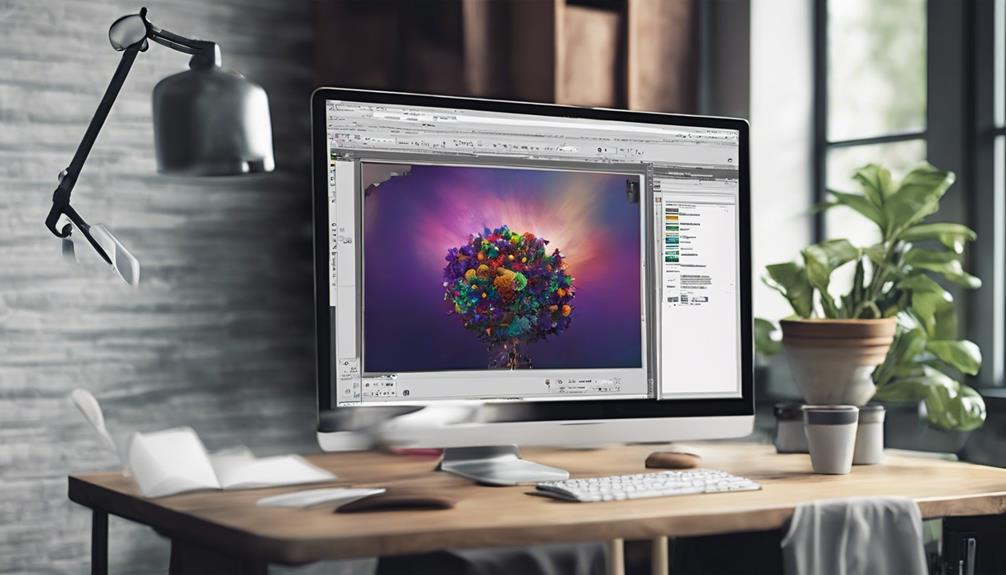
When thinking about the necessary tools for construction projects, you may be surprised to discover the important role that Adobe plays in the industry. With cutting-edge technologies for 3D design and seamless integration with Creative Cloud, Adobe provides a variety of benefits that can greatly improve project results.
Let’s explore how Adobe’s versatile software solutions and industry-standard tools provide indispensable support for professionals in the field.
Key Takeaways
- Adobe enhances design precision and project management in construction.
- Seamless integration with Creative Cloud streamlines workflows for efficiency.
- Cloud collaboration tools boost communication and project evolution.
- Extensive library of design assets enrich architectural projects creatively.
Versatile Software Solutions
Adobe’s versatile software solutions cater to a wide range of industries, including design, architecture, engineering, and construction, making it an indispensable tool for project development. When it comes to construction projects, Adobe software plays a crucial role in managing building materials and streamlining processes on the construction site. Professionals in the construction industry rely on Adobe tools to create detailed designs, schematics, and plans, ensuring that every aspect of the project is carefully considered.
On the construction site, Adobe software facilitates seamless communication and collaboration among team members, enabling real-time updates and modifications to plans. This level of connectivity helps in avoiding delays and ensuring that the project progresses smoothly. Additionally, Adobe’s 3D modeling capabilities allow for realistic visualizations of the final structure, aiding in decision-making and client presentations.
With Adobe software, construction professionals can work efficiently, ensuring that building projects are executed with precision and accuracy. The use of Adobe tools elevates the construction process, making it more efficient and effective from planning to completion.
Seamless Integration With Creative Cloud
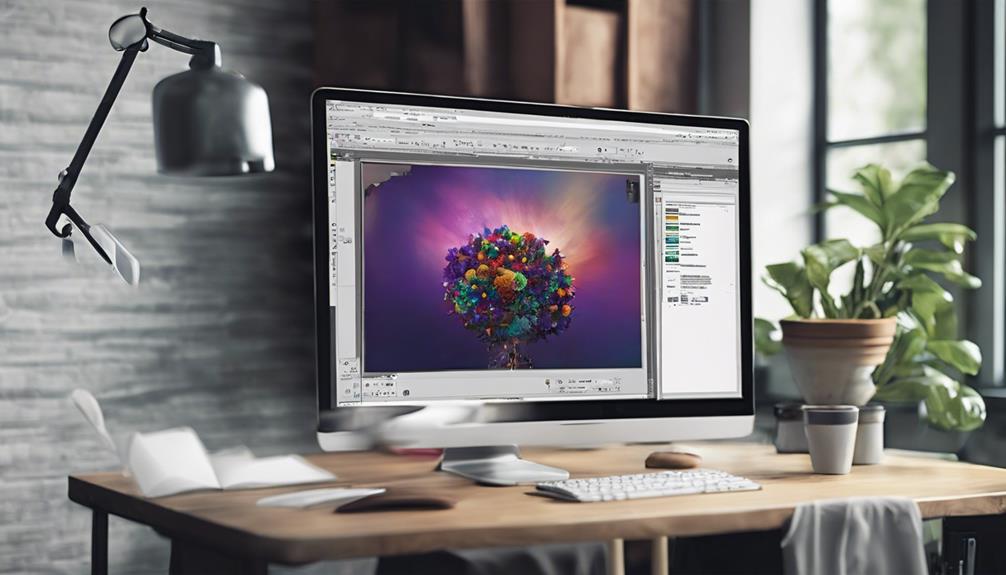
Adobe’s seamless integration with Creative Cloud streamlines our workflows and fosters efficient collaboration within our team.
By providing access to a diverse array of Adobe applications and services, Creative Cloud enhances our creativity and design capabilities.
The cloud-based platform allows for easy file sharing and ensures that updates and new features are automatically synced, boosting our productivity.
Cloud Collaboration Benefits
With Creative Cloud’s seamless integration, team members can collaborate effortlessly on projects, ensuring real-time editing and efficient workflow. Adobe’s cloud collaboration features streamline communication and feedback processes for smoother project management. The platform enables simultaneous work on the same project, enhancing productivity and fostering creativity. Version control and instant access to updates guarantee that everyone is on the same page, reducing errors and delays. Through Adobe’s cloud collaboration capabilities, building with Adobe becomes a dynamic and interactive process, where ideas flow freely, and projects evolve rapidly. Embrace the power of collaboration with Adobe Creative Cloud for a more cohesive and innovative approach to building projects.
Cloud Collaboration Benefits Adobe Creative Cloud Real-time editing Seamless integration Simultaneous collaboration Efficient workflow Version control Instant updates Streamlined communication Enhanced productivity
Enhanced Workflow Efficiency
Enhancing workflow efficiency through seamless integration with Creative Cloud optimizes collaborative efforts and boosts productivity for building projects. Adobe’s integration with Creative Cloud facilitates smooth collaboration and file sharing among various Adobe applications, streamlining the design process.
By leveraging Creative Cloud libraries, designers can easily access design assets, colors, and fonts, saving time and ensuring consistency in material selection for building projects. Additionally, the integration of Adobe Stock within Creative Cloud offers a vast repository of high-quality images, enriching the visual elements of design projects.
Adobe XD’s design system feature further enhances workflow efficiency by simplifying the creation and maintenance of design components, promoting a seamless building process. With Adobe Fonts integration, designers can efficiently choose from a diverse range of fonts directly within their projects, enhancing typography choices and overall project quality.
Enhanced Collaboration Capabilities
By fostering seamless communication and collaboration, Adobe’s tools revolutionize how project teams work together regardless of their physical locations. Adobe enables construction teams to collaborate effectively on projects through its innovative features. Here are some key points highlighting the enhanced collaboration capabilities of Adobe:
- Real-time Collaboration: Team members can work together simultaneously on Adobe platforms, providing instant feedback and making revisions in real-time.
- Seamless Sharing and Editing: Adobe allows for easy sharing and editing of project documents and designs, ensuring all team members are on the same page.
- Integration with Project Management Tools: Adobe software integrates seamlessly with various project management tools, enhancing workflow efficiency.
- Cloud-Based Solutions: Adobe’s cloud-based solutions enable team members to access project files and resources from anywhere, promoting flexibility and accessibility.
With these collaborative features, Adobe empowers construction teams to communicate effectively and work cohesively towards successful project outcomes.
Extensive Library of Design Assets

Adobe’s extensive library of design assets provides us with a wealth of resources to elevate our building projects. With a diverse range of options such as adobe bricks, mud plasters, renders, and roofing materials, we’ve the tools needed to create authentic and visually appealing structures.
Managing these assets becomes effortless, allowing us to focus on the creative aspects of our projects with ease.
Rich Design Resources
How does Adobe’s extensive library of design assets enhance the creative possibilities in architectural projects? Adobe offers a diverse range of design elements that can transform traditional adobe construction into stunning architectural marvels. Here’s how these resources can elevate your projects:
- Diverse Color Options: Explore a wide array of colors to create vibrant and visually appealing designs.
- Textures and Finishes: Choose from smooth surfaces to rough textures for added depth and character.
- Decorative Elements: Incorporate intricate patterns and geometric motifs for a touch of elegance and sophistication.
- Unique Architectural Features: Customize your adobe buildings with arched doorways, domed roofs, and ornate facades to make them stand out.
Adobe’s design resources empower architects to craft unique and captivating structures that blend innovation with tradition.
Easy Asset Management
Exploring Adobe’s extensive library of design assets enhances the efficiency and creativity of architectural projects by providing a diverse range of pre-designed structures, textures, and patterns for easy implementation. This feature simplifies asset management, offering quick access to customizable elements for various construction needs.
Adobe’s design assets cover a wide array of architectural styles, making it a versatile tool for architects and builders seeking creative solutions. By utilizing these resources, builders can easily create unique and visually appealing structures while maintaining efficiency and consistency in their projects.
The availability of such a comprehensive library streamlines the design process, saving time, and ensuring high-quality results in building projects. Adobe’s asset management capabilities contribute significantly to the success and innovation of architectural endeavors.
Industry-Standard Tools for Professionals
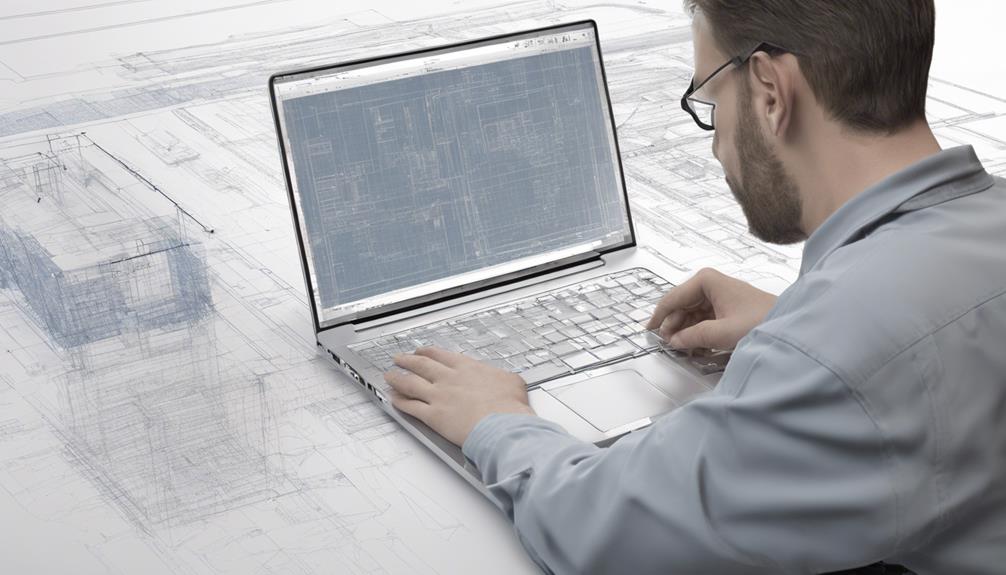
In our industry, professionals rely on a range of industry-standard tools when working on adobe construction projects. These tools are essential for ensuring precision and efficiency in building with adobe materials.
Some of the key tools include:
- Molds: Used for shaping adobe bricks, molds help maintain consistency in brick size and shape, resulting in uniform walls and structures.
- Trowels: Professionals use trowels to spread adobe mortar for joining bricks and creating smooth surfaces, ensuring strong bonds between bricks.
- Levels: Essential for ensuring straight and plumb walls, levels help maintain the structural integrity and aesthetics of adobe buildings.
- Wheelbarrows: Used to transport adobe materials like mud mixtures and bricks on construction sites, wheelbarrows facilitate the movement of heavy materials, enhancing productivity.
Efficient Project Management Features

Efficiently managing projects in the construction industry requires leveraging the streamlined processes and benefits offered by adobe construction methods. Adobe bricks, known for their ease of sourcing materials and simple production process, can streamline construction timelines and reduce overall project costs. Their durability and longevity minimize the need for frequent maintenance, contributing to efficient project management. By incorporating adobe into building projects, sustainability efforts can be enhanced, reducing the environmental impact and aligning with efficient project management practices.
Moreover, adobe’s high thermal mass properties offer energy efficiency benefits, reducing long-term operational costs. This feature not only provides a comfortable indoor environment but also aligns with modern construction practices that prioritize sustainability and energy efficiency. Additionally, the thermal mass of adobe plays a crucial role in maintaining stable indoor temperatures, reducing the reliance on heating and cooling systems. Overall, the incorporation of adobe bricks in construction projects can significantly contribute to efficient project management practices.
Innovative Technologies for 3D Design
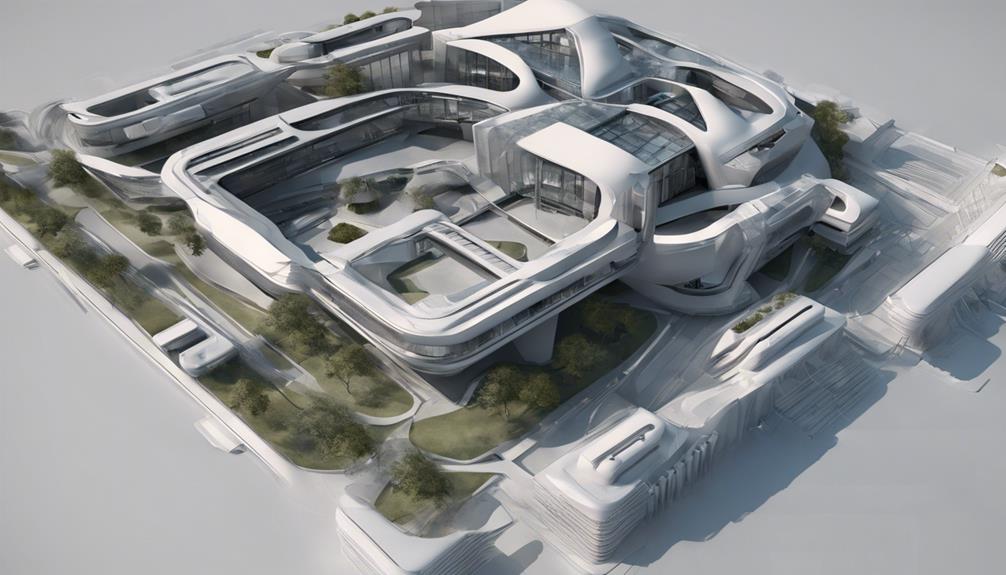
Incorporating cutting-edge 3D design technologies revolutionizes the visualization and planning of building projects, enhancing precision and efficiency throughout the construction process. When exploring innovative technologies for 3D design, there are several key advancements shaping the industry:
- Building Information Modeling (BIM) enables detailed virtual construction planning, ensuring accurate project visualization.
- Virtual Reality (VR) and Augmented Reality (AR) tools provide immersive experiences, aiding in better understanding and communication of design concepts.
- Parametric modeling software allows for the creation of intricate geometries, optimizing building performance while adhering to building codes.
- 3D scanning technology captures precise measurements of historic adobe buildings, facilitating restoration projects and compliance with preservation guidelines.
These technologies not only streamline collaboration among stakeholders but also play a crucial role in meeting the evolving demands of the construction industry while ensuring adherence to building regulations and codes.
Mobile Accessibility for On-the-Go Work
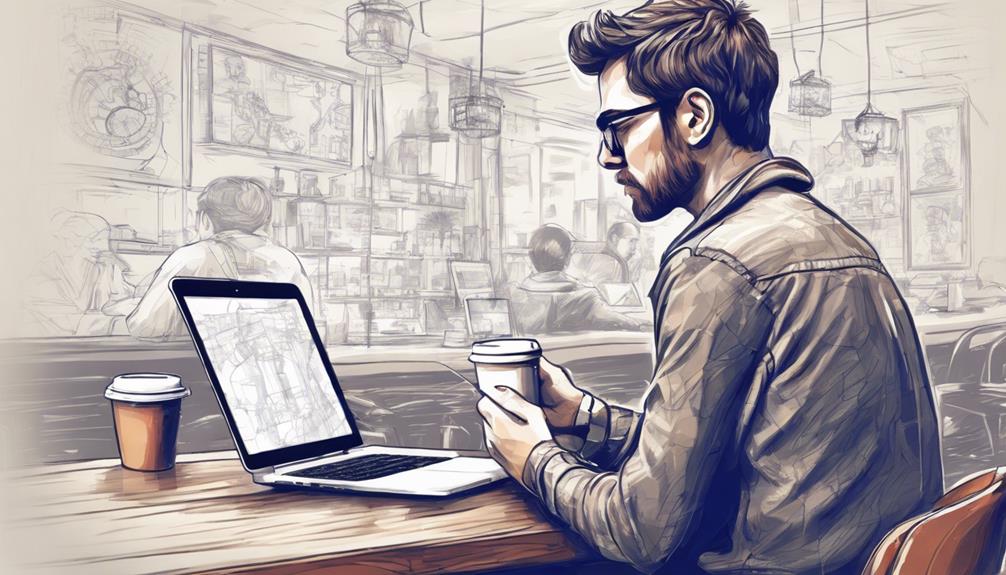
Exploring the realm of innovative technologies for 3D design leads us to the realm of mobile accessibility for on-the-go work in the construction industry. Adobe’s mobile accessibility tools are revolutionizing the way construction professionals in the United States engage with adobe house projects. By leveraging mobile apps and cloud-based platforms, professionals can access project details, collaborate with team members, and manage tasks seamlessly from smartphones and tablets.
Real-time updates and easy access to project documentation facilitate efficient communication, project planning, and decision-making processes. This streamlined approach enhances project coordination, scheduling, and resource management, ultimately leading to faster project completion and improved outcomes. Stakeholders can monitor progress, make informed decisions on the fly, and ensure successful project delivery with Adobe’s mobile capabilities.
In a fast-paced industry where time is of the essence, mobile accessibility for adobe projects offers a competitive edge by enabling work to continue uninterrupted, regardless of location.
Continuous Updates and Support
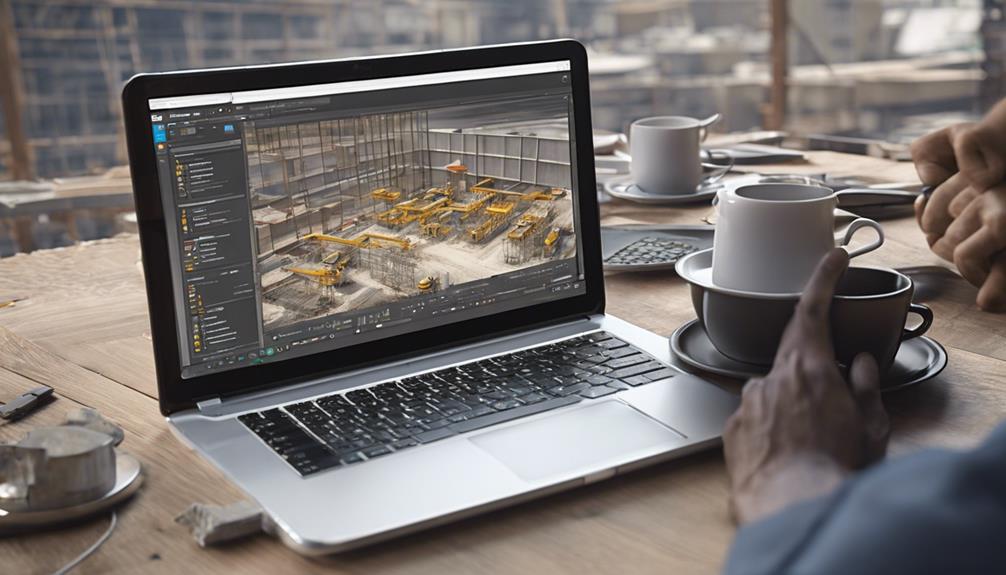
Embracing the evolution of Adobe construction techniques through continuous updates ensures projects meet modern building codes and standards effectively. Adobe walls are strengthened with improved compressive strength, enhancing structural integrity and longevity.
Here are key reasons why ongoing updates and support in Adobe construction are crucial:
- Innovative Techniques: Regular advancements in adobe materials and methods keep construction practices up-to-date.
- Expert Guidance: Ongoing support from adobe construction experts ensures projects are executed with precision and efficiency.
- Preservation Enhancements: Updated preservation guidelines for historic adobe structures help maintain their cultural and architectural significance.
- Resource Accessibility: Access to resources and references on adobe construction facilitates informed decision-making for successful project outcomes.
Cost-Effective Subscription Plans

When considering Adobe’s cost-effective subscription plans, we find that they offer affordable pricing options that deliver excellent value for money. These plans can help streamline expenses and maximize resources for building projects.
Opting for such subscriptions can ultimately contribute to significant savings in construction costs.
Affordable Pricing Options
Affordable subscription plans for Adobe materials provide a cost-effective solution for builders looking to reduce construction expenses. Adobe construction offers lower material and labor costs compared to traditional building materials, making it ideal for budget-conscious projects.
The simplicity of Adobe production processes contributes to its affordability, ensuring competitive pricing. Adobe’s availability in many regions ensures budget-friendly options for builders. Cost-effective subscription plans for Adobe materials can further reduce construction expenses and overall project costs.
- Adobe construction offers lower material and labor costs
- The simplicity of Adobe production processes contributes to its affordability
- Adobe’s availability in many regions ensures competitive pricing
- Cost-effective subscription plans for Adobe materials can reduce construction expenses
Value for Money
Our cost-effective subscription plans for adobe construction offer exceptional value for builders seeking efficient and budget-friendly building solutions.
Adobe construction stands out as a cost-effective option due to lower material and labor expenses compared to modern building materials. This value for money is particularly evident in regions like the American Southwest where adobe is abundant and affordable.
The affordability of adobe construction extends its benefits to addressing housing shortages and providing sustainable housing solutions, making it ideal for low-cost housing projects.
The long-term durability and minimal maintenance requirements of adobe structures, exemplified by iconic buildings like the Great Mosque of Djenné, further highlight the value for money that adobe construction brings to building projects.
Frequently Asked Questions
What Are the Benefits of Adobe Construction?
When it comes to the benefits of adobe construction, we see a smaller environmental footprint, cost-effectiveness, durability, and sustainability. These structures last for centuries and offer excellent sound insulation.
Adobe is a fantastic choice for building projects due to its eco-friendliness, use of natural resources, and long-lasting qualities. The advantages of adobe construction make it a top contender for those seeking a reliable and environmentally conscious building material.
What Makes Adobe a Good Building Material?
Adobe’s versatility as a building material stems from its sustainability, thermal mass properties, affordability, and durability. It offers excellent temperature regulation, reducing energy consumption.
Its historical track record showcases longevity and minimal maintenance. Additionally, adobe’s fire resistance and sound insulation qualities make it a sought-after choice in construction.
These features make adobe a smart and eco-friendly option for a variety of building projects.
Why Build With Adobe?
Building with adobe offers numerous benefits. It’s eco-friendly, cost-effective, and durable, making it a wise choice for construction projects.
Adobe structures can last for centuries with minimal maintenance and provide excellent sound insulation. Additionally, adobe has a unique aesthetic appeal that sets it apart from conventional building materials.
These factors make adobe an essential option for those looking to build sustainably and effectively.
What Is Adobe Used for in Construction?
Adobe, a versatile material, is essential in construction. Its application ranges from forming sturdy walls to creating durable roofs and floors. With thermal mass properties, it effectively moderates indoor temperatures.
Over generations, adobe has been used in diverse cultures for its reliability and efficiency in both residential and commercial projects. The blend of tradition and innovation makes adobe a timeless choice for sustainable building practices.
Conclusion
In conclusion, Adobe is an essential tool for building projects due to its sustainability, cost-effectiveness, durability, and aesthetic appeal.
Why settle for anything less when Adobe offers a combination of practical benefits and environmental advantages?
Choose Adobe for your next construction endeavor and experience the difference it can make.
- About the Author
- Latest Posts
Introducing Ron, the home decor aficionado at ByRetreat, whose passion for creating beautiful and inviting spaces is at the heart of his work. With his deep knowledge of home decor and his innate sense of style, Ron brings a wealth of expertise and a keen eye for detail to the ByRetreat team.
Ron’s love for home decor goes beyond aesthetics; he understands that our surroundings play a significant role in our overall well-being and productivity. With this in mind, Ron is dedicated to transforming remote workspaces into havens of comfort, functionality, and beauty.
-

 Vetted2 weeks ago
Vetted2 weeks ago15 Best Drip Irrigation Systems to Keep Your Garden Thriving
-

 Vetted4 hours ago
Vetted4 hours ago15 Best Foot Massagers for Neuropathy to Soothe Your Feet and Relieve Discomfort
-

 Vetted6 days ago
Vetted6 days ago15 Best Sports Laundry Detergents for Keeping Your Activewear Fresh and Clean
-

 Vetted1 week ago
Vetted1 week ago15 Best Tall Toilets for Seniors That Combine Comfort and Safety
-

 Vetted2 weeks ago
Vetted2 weeks ago15 Best Dish Scrubbers to Keep Your Kitchen Sparkling Clean
-
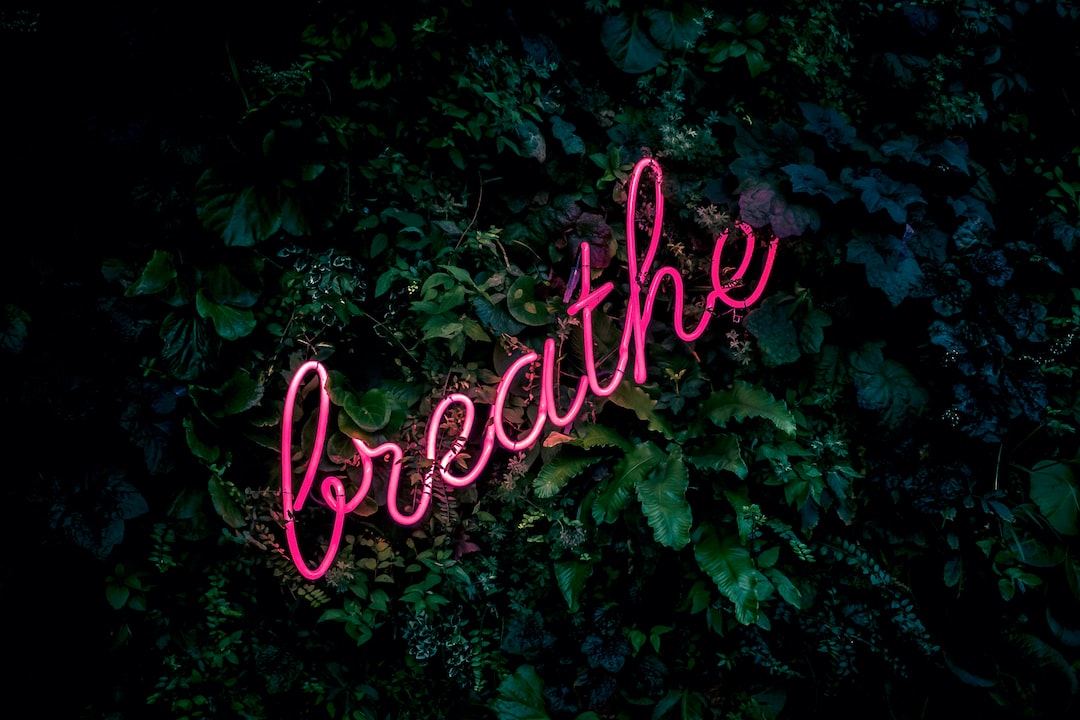
 Beginners Guides3 weeks ago
Beginners Guides3 weeks agoDesigning Your Retreat Center – Essential Tips
-
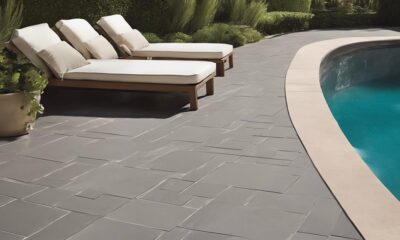
 Vetted4 weeks ago
Vetted4 weeks ago15 Best Tile Adhesives for Outdoor Use – Top Picks for Durable and Weather-Resistant Installations
-

 Beginners Guides4 weeks ago
Beginners Guides4 weeks agoAre Retreats Profitable










